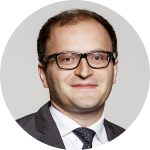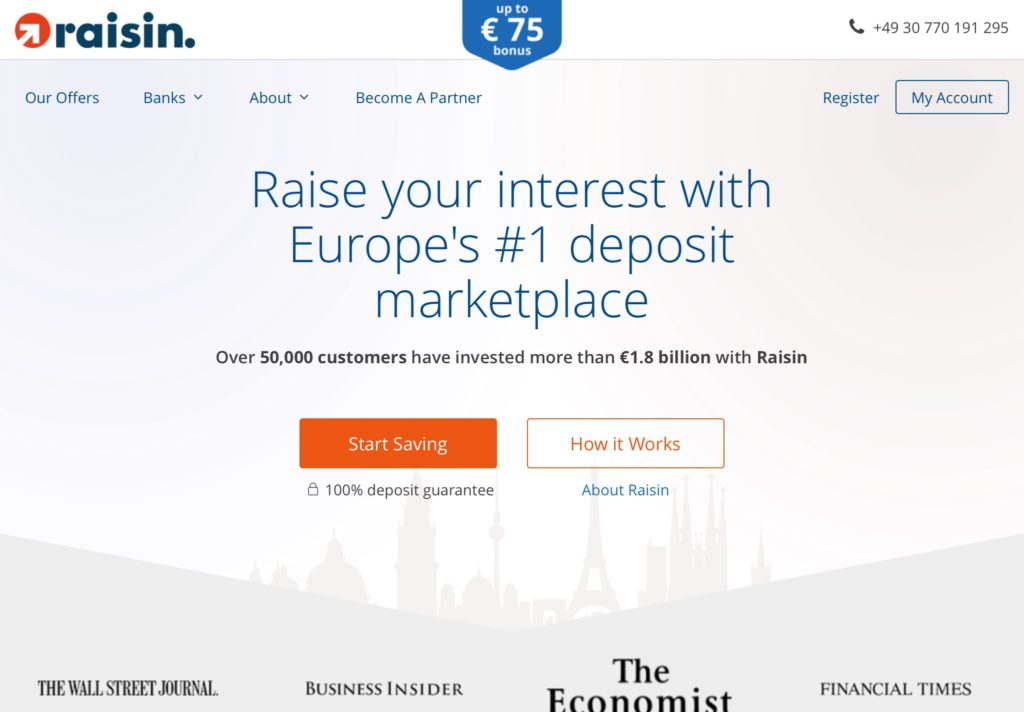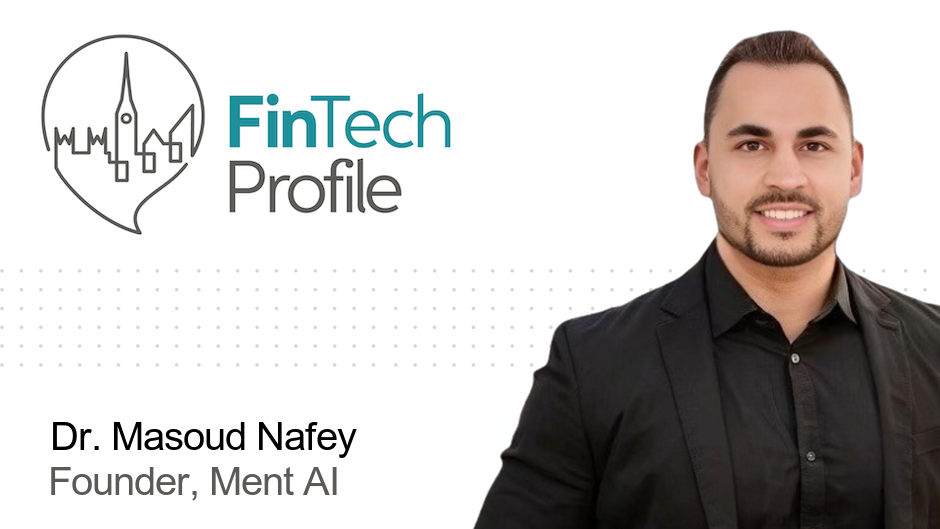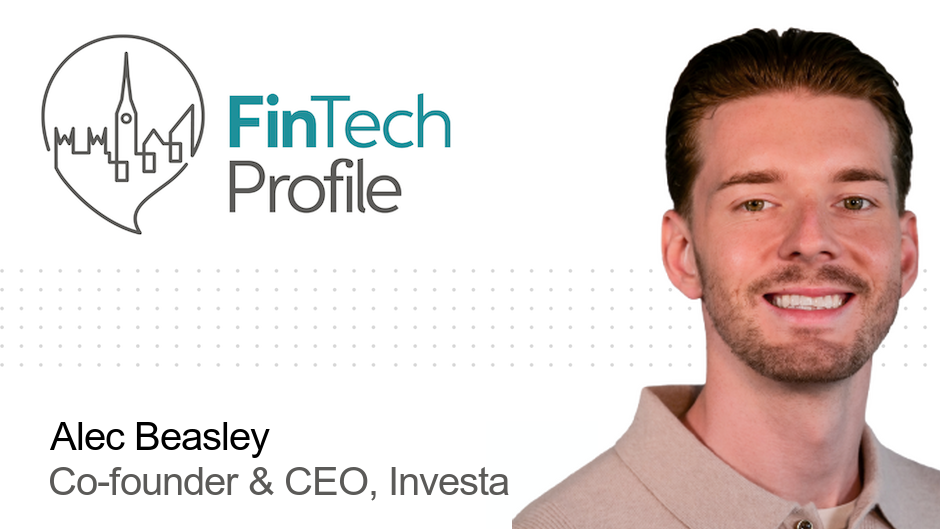Tamaz Georgadze of Raisin GmbH

For today’s profile we have Tamaz Georgadze of Raisin GmbH.
They are the leading European bank deposit marketplace.
Our questions are in bold.
– – – – –

Who are you and what’s your background?
My name is Tamaz Georgadze. I come from Georgia which when I was born was still part of the USSR. I now live and work in Germany, where I arrived when I was 16 to learn German and write my dissertation in economics. Upon completing my PhD, I worked at McKinsey & Co. for 9 years – the last few years as principal. I mainly served clients in the financial services industry across Europe and beyond. While working for banks in different countries I realized that deposit rates still vary quite significantly between banks and even more so between different countries. This led to me founding Raisin together with 2 former colleagues in 2012 with the goal of allowing savers to get a fully integrated access to the best interest rates possible – even if these are not available in their home country… And to also allow banks to get easier access to international customers. After a year of intense preparations we launched our German marketplace WeltSparen at the end of 2013.
What is your job title and what are your general responsibilities?
My job title is CEO and as such I lead the company overall. I take particular care of Partner Bank Acquisition, Business Development, Legal, and our international expansion efforts. In particular partner bank acquisition requires a fair amount of travelling to meet potential partners across Europe.
Can you give us an overview of your business?
Raisin is an online marketplace that allows customers in Europe to open deposits in banks from across Europe. We run localised platforms in 4 European languages (English, French, German – separately for Germany and Austria, and since December 1st, Spanish) which enable savers across Europe to open deposits offering more attractive conditions than are normally available to them in their home countries.
Given that EU-mandated national deposit guarantee schemes protect savings up to €100,000 per bank per customer, we allow our customers to invest this amount per bank so that every customer knows that her money is safe. In less than 3 years we have attracted over 50,000 customers who have invested over € 1.8 billion in our 22 partner banks. We have received numerous awards such as being named one of the FinTech50 and have a customer satisfaction rate of 96%.
Tell us how you are funded.
We have collected a total of EUR 30 million in three funding rounds. The first round was a friends and family round – our series A and series B rounds were VC-led. Our main investors are Index Ventures as well as Palo Alto-based Ribbit Capital and Tom Stafford and Yuri Milner from DST.
Why did you start the company? To solve what problems?
We realised that although Europe is in theory a common market, the retail finance sector is still highly fragmented and divided along national borders. This mean that people in some EU countries receive substantially lower interest rates on their bank deposits than elsewhere in Europe. And accessing savings accounts in other countries was very difficult for customers from a practical standpoint since it requires speaking the local language, often means physically going to the bank, getting familiar with tax regulation and so on. We wanted to help people access the best interest rates wherever they are to be found on the continent.
In addition, banks tend to attract customers with hook offers, which are effective only for short times, fresh money or limited amounts. Customers need to constantly switch accounts, redo account openings, keep multiple online banking access codes etc. to be able to have any decent return on their cash savings
That is why we built a marketplace where customers can access bank offers from across Europe and open savings accounts in these banks in a simple and convenient way. All our offers are transparent and no-frills / no-hooks. Once customers open a Raisin account they have the option to manage multiple savings accounts with different banks from the comfort of their home. Additionally, all of their deposits are protected by EU-mandated national deposit guarantee schemes which cover their entire investment.

Who are your target customers? What’s your revenue model?
Our target customers are European savers – that want to place their savings in secure bank deposits. Usually, they are a bit older than you would expect from the “normal” user of fintech services. Our customers are searching for higher interest rates but are not willing to invest (all of their savings) in more volatile financial products such as mutual funds.
In total our customers have already earned € 15 million in additional interest compared to average interest rates available in their respective home markets.
Our services are completely free for customers. The banks that we work with pay us servicing fees.
If you had a magic wand, what one thing would you change in the banking and/or FinTech sector?
Traditionally banks have been very product-centric, trying to maximise the revenues and the profits they obtained from the products they rolled-out. If I had a magic wand I would make the banking sector think more about customers, and how to offer them a better experience to make the industry customer-centric rather than product-centric as it has been until now. Fintech, robo advisors and AI will radically change the banking sector. The traditional banker job is dying and over the next 10 years we will see that a host of new and old tasks and services can be delivered at a fraction of the cost by automated systems. This makes it urgent for every bank to reassess its approach towards customers.
What is your message for the larger players in the Finance industry?
I think that until now we have seen the fintech sector contribute to the unbundling of financial services, by offering one specific banking service more efficiently and more inexpensively than conventional banks. Now we have reached a second stage, where fintech are contributing to the re-bundling of financial services by cooperating with each other and with forward-looking incumbents. Due to these dynamics, I would tell the larger (incumbent) players in the finance industry to cooperate with fintech as this enables each to learn from the experience of the other and to leverage the strengths each side brings to the table. This is especially urgent given that in Europe over the next few years access to bank’s APIs will be opened, giving end-customers more options than ever in terms of what, when and where they buy banking services.
What phone are you carrying and why?
I carry a Samsung S7 since I am an Android fan.
Where do you get your industry news from?
There are two publications that I regularly turn to for information. On the one hand, I regularly read the Economist.
For news and trends in the fintech sphere I like listening to Andre Bajorat’s “Payment and Banking” podcast.
Can you list 3 people you rate from the FinTech sector that we should be following on Twitter?
I would recommend you follow the following people:
Philippe Gelis (@pgelis) CEO of Kantox who continuously tweets on FinTech related topics
@AndreaRexer responsible for banking and regulation at Süddeutsche Zeitung – a renowned German newspaper
Our very own @DavidJMaireles – Country Head Spain and named one of the Top100 Fintech influencers by Jay Palter
Can you suggest the name of an Angel Investor or VC that might be interested in being profiled?
I would actually suggest that you get in touch with Ribbit Capital – one of our investors. They are a Palo Alto-based VC that focuses exclusively on fintech companies and has invested in well-known companies such as CreditKarma, Funding Circle, and WealthFront. However, they are yet not all that well-known in Europe.
What’s the best FinTech product or service you’ve seen recently?
TransferWise and similar money wiring services. These services have noticeably reduced the cost of sending money abroad. This has made a difference in the lives of tens of millions of people, particularly people in developing countries who rely on remittances to cover basic health and education expenses.
Finally, let’s talk predictions. What trends do you think are going to define the next few years in the FinTech sector?
Overall I see two large trends that will define the next few years in the Banking and FinTech sector:
Firstly, I see regulatory and competitive pressure pushing banks to open access to their APIs, thus leading to more competition, greater transparency and above all more choice for customers. This will mean that banks will no longer be able to count on captive customers. In this context, easy access to information across banking institutions will make marketplaces increasingly important in determining where end customers place their money, based on the superior transparency and competitiveness of financial offers these marketplaces make available.
The second trend that I see emerging is a significant increase in context-based services and products. That is, a situation where the increasing availability of reliable and affordable data, makes it possible for companies to offer products and services at the instant customers most need it, both in time-sensitive andlocation-sensitive contexts.
– – – – –
Thanks to Tamaz for his answers today. You can find out more about Raisin GmbH on their website, linkedin and twitter.
If you would like to receive email updates whenever we publish, sign up to our Newsletter. You can unsubscribe at any time and we will never use your email for anything else.
If you’ve any suggestions for hot FinTech companies (startup, or established ventures) that we should be profiling, or have an opinion piece to offer, or a FinTech related event you’d like to tell us about, have a look here for more details.





